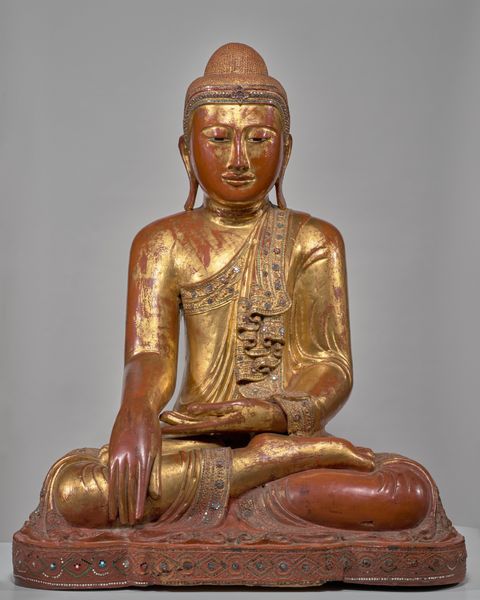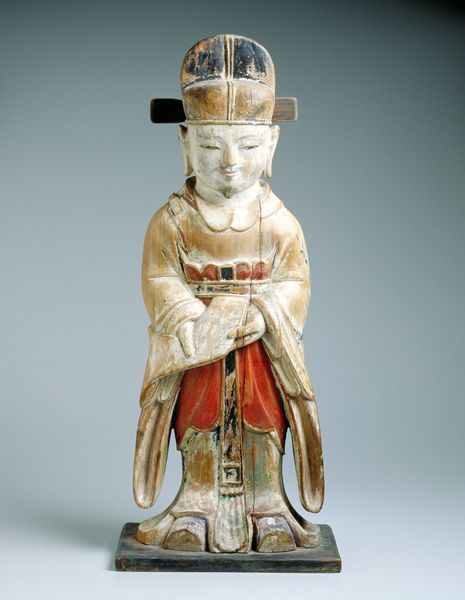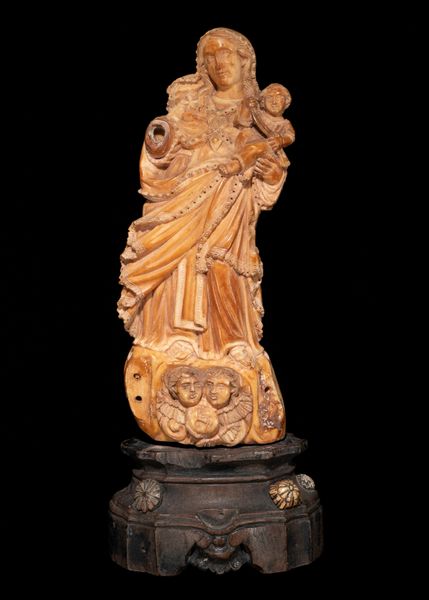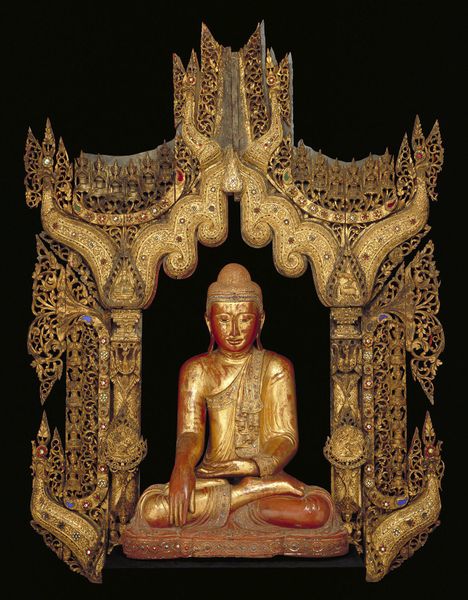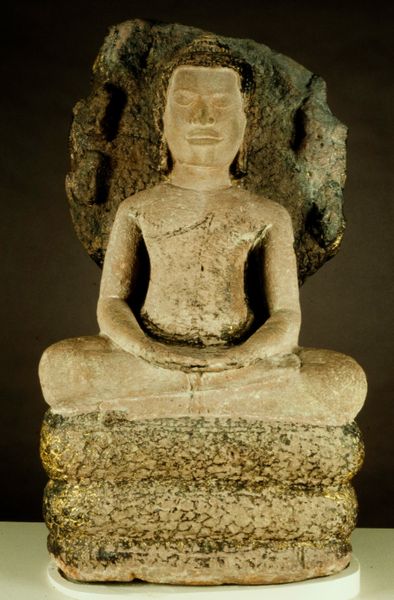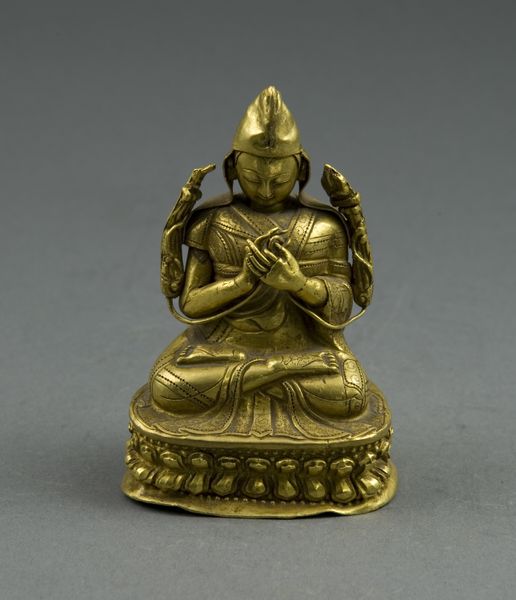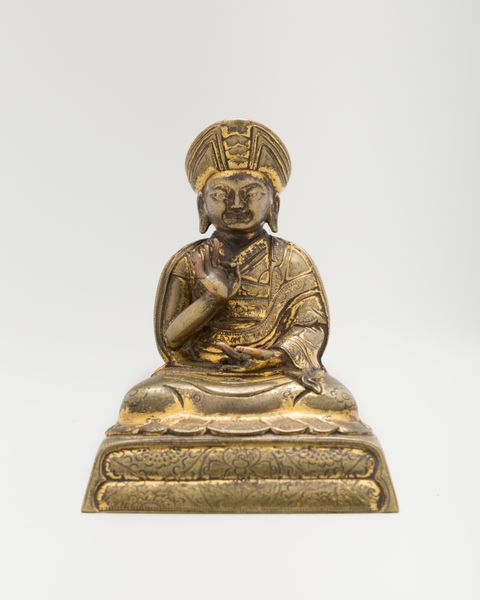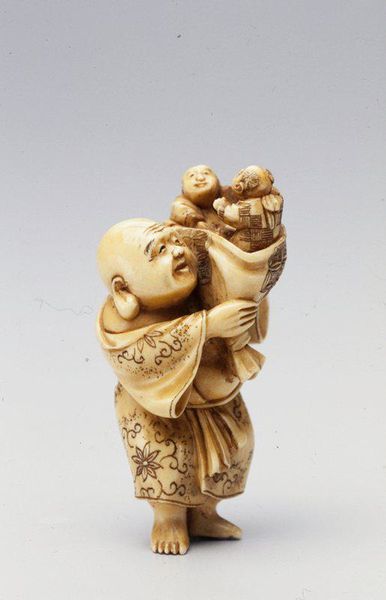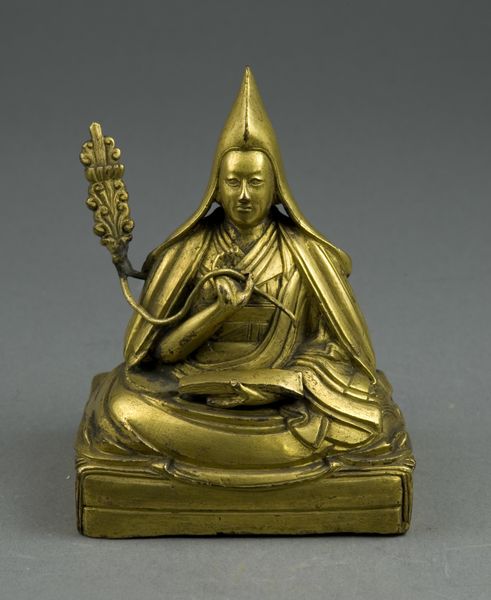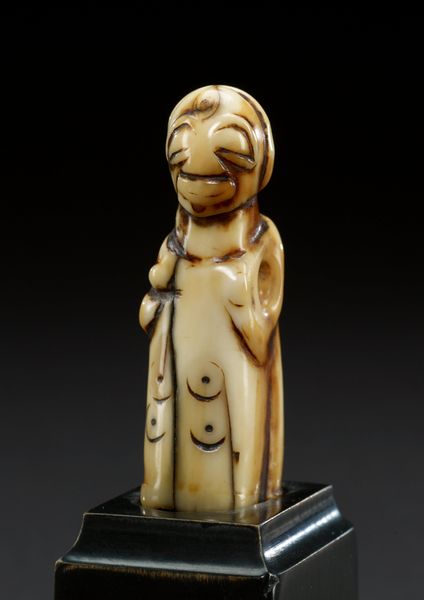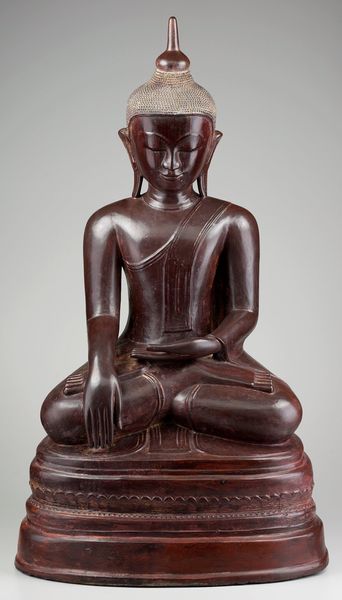
bronze, sculpture
#
sculpture
#
asian-art
#
bronze
#
figuration
#
ancient-mediterranean
#
sculpture
Dimensions: 6 1/4 x 1 3/8 in. (15.88 x 3.49 cm)
Copyright: Public Domain
Editor: Here we have a "Standing Buddha" made in approximately the 8th century, currently housed at the Minneapolis Institute of Art. It is crafted out of bronze. The statue has an overall feeling of serenity, despite showing its age through darkened spots across its form. What can you tell me about its history and the purpose it served? Curator: That serene quality, as you observed, likely reflects the intentions of both the artist and the patron. Eighth-century Buddhist sculpture played a vital role in disseminating religious and political power. Bronze sculptures like this would often be commissioned by wealthy patrons and placed in temples. Their presence visually legitimized both the donors and the ruling elite through associations with Buddhist ideals of peace and wisdom. Consider its scale - how do you imagine it being displayed? Editor: Perhaps on an altar within a temple, intended to inspire reverence among worshippers? Did the democratization of artistic interpretation apply to these sorts of pieces? Curator: Indeed, their placement suggests that, influencing public perception. While individual experiences certainly varied, the overall objective of devotional art remained relatively controlled by religious and political entities. This ensures standardized beliefs. It also ensured standardized iconography to promote the intended narrative, but the style also evolved through cultural exchanges across Asia. Think about how that uniform standard can shift, alter, or change beliefs as new societies are established. Editor: It’s fascinating how much power these objects held in shaping social structures. Curator: Exactly. The sculpture, then, is more than just a depiction of the Buddha. It is a historical artifact, laden with cultural and political meaning that continues to resonate today. Editor: I never thought about art holding that sort of power over governments in ancient times. I'll look at these works from that context going forward! Curator: I’m glad I could give you another way of looking at art history!
Comments
minneapolisinstituteofart almost 2 years ago
⋮
During the Unified Silla period (668–935), Buddhism was promoted not only for the salvation of individual worshippers but also for the Korean nation as a whole. Buddhist temples proliferated and bronze images were cast in great number. Artists created small statues like this for use on family altars. While earlier images reflect sculptural styles prevalent in China, the somewhat blocky proportions, stern expression, and simplified drapery pattern of this Buddha are expressly Korean.
Join the conversation
Join millions of artists and users on Artera today and experience the ultimate creative platform.
